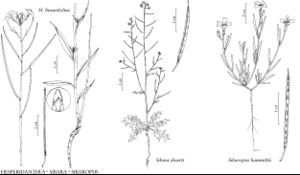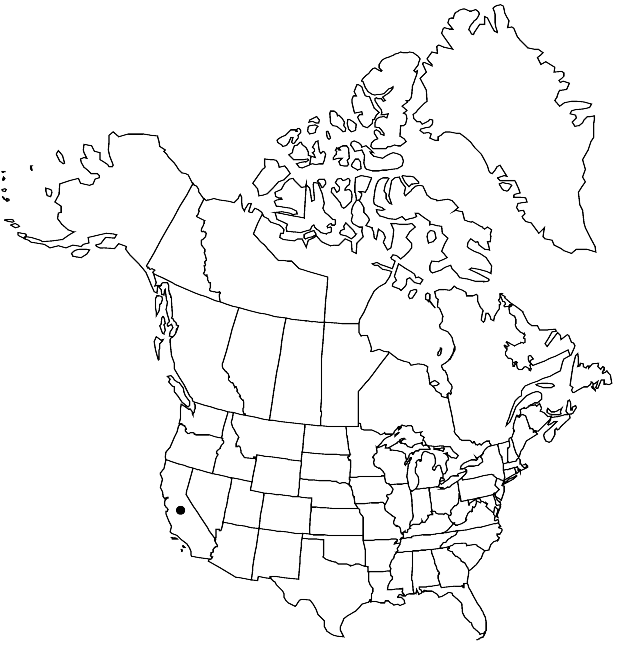Sibaropsis hammittii
Madroño 44: 30, figs. 2–4. 1997.
Stems 0.5–2 dm, unbranched or branched (several, ascending) near base. Basal leaves soon withered. Cauline leaves: blade somewhat fleshy, narrowly linear, (1–)1.5–3(–4.5) cm × 0.5–1 mm. Fruiting pedicels 2.5–4 mm. Flowers: sepals 2.8–3.2 × 0.5–1 mm; petals 8.5–10 × 2–2.5 mm, margins not crisped, claw attenuate to base, 5–6 mm, longer than blade; filaments: abaxial and lateral pairs distinct, shorter, adaxial pair ± connate, 4.5–5 mm; anthers ca. 0.8 mm. Fruits erect, (1.5–)2–2.5 cm × 0.7–0.9 mm; style (1.5–)3–4.5 mm. Seeds reddish to dark olive-brown, 1–1.3 × 0.5–0.6 mm. 2n = 28.
Phenology: Flowering Mar–Apr.
Habitat: Patches of open, relatively moist, heavy clay soil dominated by native grasses, geophytes, and annuals
Elevation: 700-1100 m
Discussion
Of conservation concern.
Sibaropsis hammittii is known from two areas, separated by about 120 km, in the Peninsular Ranges of southern California: the Santa Ana Mountains in Riverside County, and the Viejas and Poser mountains in San Diego County.
Selected References
None.

